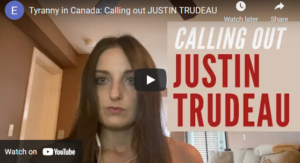 Dr. Death sounds like a horror story title. In the case of Christopher Daniel Duntsch, it’s a true horror story. Christopher Duntsch was an American doctor and specialized as a spinal surgeon—a deadly spinal surgeon—who killed three of his patients and maimed 31 others during a two-year span. Today, Duntsch is serving a life imprisonment term in a Texas prison, and he’s now the subject of an NBC Peacock netstreaming series featuring some big-name, A-List actors like Alex Baldwin, Christian Slater, and Kelsey Grammer. The series is rightly titled “Dr. Death.”
Dr. Death sounds like a horror story title. In the case of Christopher Daniel Duntsch, it’s a true horror story. Christopher Duntsch was an American doctor and specialized as a spinal surgeon—a deadly spinal surgeon—who killed three of his patients and maimed 31 others during a two-year span. Today, Duntsch is serving a life imprisonment term in a Texas prison, and he’s now the subject of an NBC Peacock netstreaming series featuring some big-name, A-List actors like Alex Baldwin, Christian Slater, and Kelsey Grammer. The series is rightly titled “Dr. Death.”
The story of this psychopath with a scalpel is shocking. But what’s equally shocking is how the “medical system” allowed this monstrous medical menace to operate on completely innocent and critically ill people. It was no secret in medical circles that Duntsch was a clear and present danger to patients. In fact, it was peers within the system who nicknamed him Dr. Death, but few did anything about it.
The Dr. Death tragic story is that of major systemic failure. It’s a common theme in true crime stories, and there’s nothing truer than the tragic damage done by Christopher Duntsch to unwitting patients. It’s a story of incompetence. It’s a story of cover-ups. And it’s a story of corporate greed within the medical business community.
To understand how Christopher Duntsch turned into Dr. Death, it’s necessary to know his background. Let’s first look at Duntsch’s upbringing and his training before examining the carnage created by turning Dr. Death—The Killer Surgeon—loose in the hospital O.R.
 Christopher Duntsch was born in 1971 in Montana. He was raised in Memphis, Tennessee in a stable, middle-class, evangelical Christian home. Duntsch was an average student and sports player. However, Duntsch was driven in his football interest and, despite his lack of natural ability, he trained far harder than other players and made the college team when he enrolled at Colorado State University. One of his teammates later said, “Chris lacked talent but he worked harder than the rest of us.”
Christopher Duntsch was born in 1971 in Montana. He was raised in Memphis, Tennessee in a stable, middle-class, evangelical Christian home. Duntsch was an average student and sports player. However, Duntsch was driven in his football interest and, despite his lack of natural ability, he trained far harder than other players and made the college team when he enrolled at Colorado State University. One of his teammates later said, “Chris lacked talent but he worked harder than the rest of us.”
Duntsch carried this drive back to Memphis when he was accepted into medical school at Memphis State University. He completed the ambitious MD-PhD program then entered the neurosurgery residency program at the University of Tennessee. Following graduation as a doctor at U of T, Duntsch completed a spine fellowship at the Semmes-Murphy clinic in Memphis.
A later investigation determined Duntsch only juniored in around 100 minimal-invasive surgeries when the typical neurosurgeon completes 1,000 during their residency and before they’re considered competent to lead a surgery. Cracks were obvious during Duntsch’s training time which was plagued with drug use and a suspension period served in a rehab facility. One colleague later testified that Duntsch regularly used LSD and cocaine at night and then go to work performing spinal operations in the morning.
During his university years, Christopher Duntsch married Wendy Renee Young with whom he had two children. Duntsch also racked up a half-million in debt and a drug dependency. Then he formulated a fraudulent curriculum vitae. In a 12-page, single-spaced document, Christopher Duntsch looked eminently qualified as a neurosurgeon. One, of many, false claims was stating he’d graduated magna cum laude from a prestigious doctorate in microbiology.
One of the reasons Duntsch focused on neurosurgery was its lucrative salary of approximately $600,000 per year. It’s also why so many medical facilities conveniently overlooked his background checks—neurosurgery was their most lucrative (ie profitable) division. Neurosurgeons were in short supply and corporate greed ultimately trumped patient safety while Christopher Duntsch preyed on poor people propped up by pools of money. A later investigation determined the average cost of a US spinal surgery exceeded $75,000 with much of that being profit for the hospital.
Duntsch’s first solo surgical employment was at Baylor Scott & White Medical Center in Plano, Texas. This was in 2011. He was under the watchful eye of a very experienced neurosurgeon, Dr. Randall Kirby, who was immediately suspicious of Duntsch’s surgical ability despite Duntsch’s boasting and alleged credentials. Dr. Kirby later testified that, “Dr. Duntsch had no business in the operating room, and he could not wield a scalpel.”
 After five majorly botched operations, the hospital allowed Duntsch to resign rather than be fired. The later investigation learned the Baylor hospital administration feared Duntsch would win a wrongful dismissal lawsuit if forcibly dismissed that could cost the institution millions of dollars. This deal was devastating to future Duntsch patients at other facilities because the hospital could not report Dr. Duntsch to the National Practitioner Data Bank (NPDB) which kept easy-access records of flagged problematic physicians.
After five majorly botched operations, the hospital allowed Duntsch to resign rather than be fired. The later investigation learned the Baylor hospital administration feared Duntsch would win a wrongful dismissal lawsuit if forcibly dismissed that could cost the institution millions of dollars. This deal was devastating to future Duntsch patients at other facilities because the hospital could not report Dr. Duntsch to the National Practitioner Data Bank (NPDB) which kept easy-access records of flagged problematic physicians.
Christopher Duntsch escaped what should have been mandatory NPDB registry for malpractice situations like:
- Operating on the wrong part of the back leaving Kenneth Fennell in permanent chronic pain with debilitated mobility.
- Cutting an unnecessary ligament in Lee Passmore as well as leaving stainless screws in incorrect positions and stripping the threads so they could not be removed.
- Leaving bone fragments in Barry Morguloff that worked their way into his spinal cord leaving him paralyzed and in a wheelchair.
- Causing Jerry Summers to suffer so much blood loss that he died from an infection from excessive transfusions.
- Severing a major artery in Kelli Martin and causing her to bleed to death without adding blood during her surgery.
It was no secret at Baylor that Christopher Duntsch was dangerous. Many even wondered about his sanity. But that didn’t stop his medical career.
Dallas Medical Center hired Dr. Dirtsch as a temporary neurosurgeon in 2012. Almost immediately, hospital staff questioned Duntsch’s qualifications and suspected him of being under drug influence while operating. Some of Duntsch’s catastrophes in Dallas were:
- Severing Floella Brown’s vertebral artery and allowing her to bleed to death without medical intervention.
- Maiming a senior, Mary Efurd, and causing her excruciating pain—rated as ten-plus on a 1-10 scale.
Longtime neurosurgeon, Dr. Robert Henderson, performed a salvage surgery on Mary Efurd. Henderson realized what an awful job Duntsch did, and he began investigating Duntsch’s history which was now following him around. Dr. Henderson contacted Dr. Kirby of Plano. The two pacted to do their own investigation and put a stop to Dr. Death.
 Because Duntsch was a temporary employee, he was immediately dismissed after these two incidents. And because Duntsch was a temporary employee, Dallas Medical Center was not required to report Dr. Duntsch to the NPDB. They didn’t, and Duntsch moved on to two more Texas medical facilities, the South Hampton Community Hospital in Dallas and the Legacy Surgery Center in Frisco.
Because Duntsch was a temporary employee, he was immediately dismissed after these two incidents. And because Duntsch was a temporary employee, Dallas Medical Center was not required to report Dr. Duntsch to the NPDB. They didn’t, and Duntsch moved on to two more Texas medical facilities, the South Hampton Community Hospital in Dallas and the Legacy Surgery Center in Frisco.
By 2013, Christopher Duntsch’s behavior was getting bizarre. He caused a string of devastating surgeries and, thankfully, no one else died. However, many folks suffered significant and long-lasting trauma. University General Hospital in Dallas was Duntsch’s last operation. Here, he severed Jeff Glidewell’s esophagus and the neighboring artery. To stop the bleeding, Duntsch stuffed a surgical sponge down Glidewell’s throat and sewed him up with the sponge still inside. The poor man nearly choked before others intervened and removed it.
On June 26, 2013, the Texas Medical Board suspended Christopher Duntsch’s practitioner license. This was after appeals by Dr. Kirby and Dr. Henderson who told the board Duntsch was a sociopath and a clear and present danger to the citizens of Texas. The board slowly investigated with most of its members not believing that any medical doctor could be this bad and incompetent. They found out otherwise and revoked Duntsch’s license on December 6, 2013.
 Meanwhile, Kirby and Henderson lobbied the Dallas DA to file charges against Duntsch. This investigation lumbered along at a tree’s pace. Duntsch then left town. He moved to Denver, declared bankruptcy for over $1 million in debt, got arrested for DUI and shoplifting, and was hospitalized for psychiatric evaluation.
Meanwhile, Kirby and Henderson lobbied the Dallas DA to file charges against Duntsch. This investigation lumbered along at a tree’s pace. Duntsch then left town. He moved to Denver, declared bankruptcy for over $1 million in debt, got arrested for DUI and shoplifting, and was hospitalized for psychiatric evaluation.
Private lawsuits began against some of the medical facilities that allowed Duntsch to operate. Finally, in July 2015, the DA filed six felony counts of aggravated assault with a deadly weapon, five counts of aggravated assault causing bodily harm, and one count of injuring an elderly person—Mary Efurd. Murder charges weren’t laid as the DA felt the state couldn’t prove Duntch’s clear intent to kill anyone. This was despite a piece of evidence turned over by Duntsch’s now ex-wife—an email to her from him stating, “I am ready to leave the love and kindness and goodness and patience that I mix with everything else that I am and become a cold-blooded killer.”
After a 15-day trial, a Texas jury found Christopher Duntsch guilty on all counts. The Appeals Court upheld Duntsch’s sentence of life imprisonment. Currently, he’s held in Huntsville and won’t be eligible to apply for parole until 2045 when he’ll be 74 years old.
Duntsch’s conviction was precedent-setting. It was the first time in United States history that a medical practitioner was convicted of criminally harming their patients. In Duntsch’s defense, his lawyer told the jury, “The only way this happens is that the entire system failed the patients.”
Primum non nocere is a Latin phrase that means “First, do no harm”. This is med-school 101 along with taking the Hippocratic Oath. The oath is as old as the ancient Greeks and the modern version goes:
I swear to fulfill, to the best of my ability and judgment, this covenant:
- I will respect the hard-won scientific gains of those physicians in whose steps I walk, and gladly share such knowledge as is mine with those who are to follow.
- I will apply, for the benefit of the sick, all measures [that] are required, avoiding those twin traps of overtreatment and therapeutic nihilism.
- I will remember that there is art to medicine as well as science, and that warmth, sympathy, and understanding may outweigh the surgeon’s knife or the chemist’s drug.
- I will not be ashamed to say “I know not”, nor will I fail to call in my colleagues when the skills of another are needed for a patient’s recovery.
- I will respect the privacy of my patients, for their problems are not disclosed to me that the world may know. Most especially must I tread with care in matters of life and death. If it is given me to save a life, all thanks. But it may also be within my power to take a life; this awesome responsibility must be faced with great humbleness and awareness of my own frailty. Above all, I must not play at God.
- I will remember that I do not treat a fever chart, a cancerous growth, but a sick human being, whose illness may affect the person’s family and economic stability. My responsibility includes these related problems, if I am to care adequately for the sick.
- I will prevent disease whenever I can, for prevention is preferable to cure.
- I will remember that I remain a member of society, with special obligations to all my fellow human beings, those sound of mind and body as well as the infirm.
- If I do not violate this oath, may I enjoy life and art, respected while I live and remembered with affection thereafter. May I always act so as to preserve the finest traditions of my calling and may I long experience the joy of healing those who seek my help.
Christopher Duntsch—Dr. Death, The Killer Surgeon—had blatant disdain for primum non nocere. He took a scalpel to his Hippocratic Oath.










